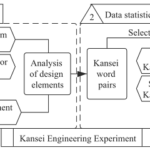
In a world where distractions abound and time seems to slip through our fingers, the Pomodoro Technique emerges as a lifesaver for those seeking to enhance their concentration, productivity, and balance between work and personal life. This method, developed by Francesco Cirillo in the late 1980s, is based on a simple yet effective time management approach, dividing work into short and focused intervals.
The Pomodoro Technique is a tool primarily aimed at reducing procrastination among students at the school or university level, but it can also be applied in the business environment.
In this article, we’ll introduce you to the Pomodoro Technique, a simple yet effective method to improve your time management and increase your productivity. With this technique, you can bid farewell to distractions and focus on what really matters.
What is the Pomodoro Technique?
The Pomodoro Technique, also known as the Pomodoro method, is a time management system that utilizes a timer to divide work into 25-minute intervals (called pomodoros) separated by short breaks of 5 minutes. According to Cirillo and Fernández (2020), the goal of the Pomodoro technique is to provide a simple tool or process to enhance productivity (both individual and team).
Francesco Cirillo developed the Pomodoro Technique in the 1980s while he was in university to keep his mind focused on his studies (Giesbrecht, 2015); Pomodoro means “tomato” in Italian.
Research supports the effectiveness of the Pomodoro Technique in improving concentration and task completion. By working in short, focused periods followed by brief breaks, individuals can maintain mental freshness and avoid burnout. Regarding this, Burton (2016) highlights that the basic concept behind the Pomodoro Technique is the creation of focused, timed work sessions during which you concentrate on a single task.
How does the Pomodoro Technique work?
The process of the Pomodoro Technique is simple:
- Create a task list and choose a task to work on.
- Set the timer for 25 minutes.
- Work without interruptions until the timer rings.
- Take a 5-minute break.
- Repeat steps 2 to 4 until you’ve completed the tasks.
Some people consider 25 minutes not to be an efficient working period for a task (Burton, 2016); in this regard, you should experiment to adapt the technique according to your needs.
Furthermore, if you get distracted during a pomodoro, note down the distraction and return to the task when the pomodoro ends. Don’t punish yourself for getting distracted; just refocus on the task.
Also, there is no set time to learn how to use the Pomodoro Technique. With a little practice, most people can learn to use it effectively within a few weeks.
Steps to apply the Pomodoro Technique
To apply the Pomodoro Technique effectively, follow these steps:
- Plan your session: Decide which tasks you want to tackle and how many pomodoros you’ll dedicate to each.
- Eliminate distractions: Silence your phone, close unnecessary browser tabs, and find a quiet place to work.
- Focus on the task: During the pomodoro, concentrate solely on the task at hand. If you get distracted, note the distraction and return to the task when the pomodoro ends.
- Take short breaks: Get up, move around, and stretch during breaks to avoid mental fatigue.
- Track your progress: At the end of each pomodoro, mark a completed pomodoro or note what you’ve achieved.
Who is the Pomodoro Technique for?
The Pomodoro Technique is not for everyone. Some people find the structure of the technique too rigid, while others find the time intervals too short. If you’re unsure if the Pomodoro Technique is right for you, the best way to find out is to try it and see how it works for you.
However, the Pomodoro Technique is ideal for anyone looking to improve their productivity, regardless of their profession or activity. It’s especially useful for:
- Students: The technique can help you focus on your studies and improve your academic performance.
- Professionals: It enables you to work more efficiently and meet your deadlines.
- Entrepreneurs: It helps you be more productive and move your projects forward.
- Anyone looking to be more productive in their daily life.
Benefits of the Pomodoro Technique
The Pomodoro method offers a range of benefits, including:
- Improves concentration: The frequent breaks built into the Pomodoro Technique prevent mental fatigue and allow sustained focus during work sessions. This leads to higher-quality output and a reduction in errors.
- Increases productivity: The Pomodoro method helps people overcome procrastination and distractions, leading to greater productivity. By working in short intervals, one can maintain a sense of urgency and accomplish more tasks throughout the day.
- Reduces stress: By breaking tasks into smaller, manageable parts, the Pomodoro Technique can help you feel less overwhelmed and more in control.
- Improves time management: Dividing tasks into manageable time blocks helps people prioritize tasks and allocate time effectively. By focusing on one task at a time, time management skills are honed, leading to greater efficiency.
- Promotes work-life balance: By helping you be more productive during your work time, the Pomodoro Technique allows you to have more free time to enjoy other activities.
Examples of Pomodoro Method Application
The Pomodoro Technique can be used for any task, from studying for an exam to writing a report. Here are some examples of Pomodoro method application:
Research
Iyengar et al., (2023) reports that the Pomodoro time management technique can have applications in planning, data analysis, editing and revising academic publications, and manuscript preparation. Fauzan (2024) highlighted that the Pomodoro technique is capable of reducing academic procrastination levels when preparing a thesis proposal.
Burton (2016) recommends Pomodoro sessions of 50 minutes followed by a 10-minute break for developing courses, research projects, or article writing.
Education
The Pomodoro method is valuable in improving writing skills of high school students (Septiani et al., 2023); and reading comprehension by enhancing their concentration and time management performance, as well as reducing internal and external interruptions factors encountered by students during reading (Muyassaroh, 2023).
Software Development
Ruensuk (2016) evaluated the implementation of using the Pomodoro Technique to reduce internal and external interruptions in agile software development with case studies of a developer who is a member of an agile team; and reports an increase in developer productivity due to decreased distractions.
Alternatives to the Pomodoro Technique
If the Pomodoro Technique doesn’t work for you, there are other alternatives you can try, such as:
- Time blocking: Time blocking involves scheduling specific time slots for different tasks or activities. Similar to the Pomodoro method, it helps people manage their time effectively and stay focused on the task at hand.
- Kanban Method: Kanban is a visual project management system that helps people visualize their workflow and limit work in progress. While not directly related to time management, it can complement the Pomodoro Technique by providing a structured approach to task management.
- GTD Method: The Getting Things Done (GTD) method, developed by David Allen, focuses on capturing all tasks and ideas and organizing them into actionable items. While different from the Pomodoro Technique, GTD can be used alongside it to enhance overall productivity.
- Eat That Frog Method: This method is based on the idea of tackling the most important and difficult tasks first thing in the day.
- Eisenhower Matrix: This method helps you prioritize your tasks by dividing them into four categories: important and urgent, important but not urgent, not important but urgent, and not important and not urgent.
Apps for Using the Pomodoro Technique
Numerous apps can help you implement the Pomodoro method, such as:
- Forest: This app allows you to plant a virtual tree that will grow while you focus on your task.
- Focus Keeper: This app allows you to set different work and break intervals, as well as customize notification sounds.
- Marinara Timer: This app is a simple and easy-to-use timer for the Pomodoro Technique.
Mac Pomodoro Technique App
If you use a Mac, there are several Pomodoro Technique apps available on the App Store, such as:
- FocusMe: An app that helps you focus and block distractions.
- Be Focused: A timer with different options to customize work and break intervals.
- Timemator: An app that helps you manage your time efficiently.
Tips for Making the Most of the Pomodoro Technique
To get the best results with the Pomodoro method, follow these tips:
- Be consistent: Use the technique regularly to turn it into a habit.
- Experiment: Try different work and break intervals to find what works best for you.
- Eliminate distractions: Create a distraction-free work environment to maximize your concentration.
- Take regular breaks: Get up and move around during breaks to avoid mental fatigue.
- Track your progress: At the end of each Pomodoro, mark a completed Pomodoro or note what you’ve accomplished.
- Be patient: Don’t expect immediate results. The Pomodoro method takes time and practice to master.
Conclusion
In conclusion, the Pomodoro Technique is a powerful tool for improving productivity and time management skills. By understanding its principles and implementing them effectively, people can overcome procrastination, improve concentration, and achieve their goals more efficiently. Explore alternative methods and use technology to tailor the technique to your specific needs and preferences. Embrace the Pomodoro method and unleash your full potential in pursuit of productivity and success.
The Pomodoro Technique is a powerful tool that can help you improve your concentration, productivity, and work-life balance. With a little practice, you can turn the Pomodoro Technique into a habit that helps you achieve your goals.
References
Burton, L. D. (2016). Can a Tomato Increase Your Productivity?. Journal of Research on Christian Education, 25(2), 95-96.
Cirillo, F., & Fernández, M. A. (2020). La técnica Pomodoro®. Ediciones Paidós.
Fauzan, A. (2024, March). Literature Review: The Application Of The Pomodoro Technique To Reduce Academic Procrastination Levels Among Students In Completing Thesis. In International Conference of Bunga Bangsa (Vol. 2, No. 1, pp. 115-125).
Giesbrecht, Beth A., “Pomodoro Technique for time management” (2015). White Papers. 19.
Iyengar, K. P., Vaishya, R., & Botchu, R. (2023). Can We Apply Pomodoro Technique in Academic Publishing?. Apollo Medicine, 10-4103.
Muyassaroh, L. (2023). THE USE OF POMODORO TIME MANAGEMENT TECHNIQUE IN EFL READING COMPREHENSION (Doctoral dissertation, Universitas Pendidikan Indonesia).
Ruensuk, M. (2016, June). An implementation to reduce internal/external interruptions in Agile software development using pomodoro technique. In 2016 IEEE/ACIS 15th International Conference on Computer and Information Science (ICIS) (pp. 1-4). IEEE.
Septiani, W. E., Sulistyaningsih, S., & Syakur, A. (2022). The Effectiveness of Pomodoro Technique on Students’ Descriptive Text Writing Quality. Jurnal Basicedu, 6(3), 3384-3390.





